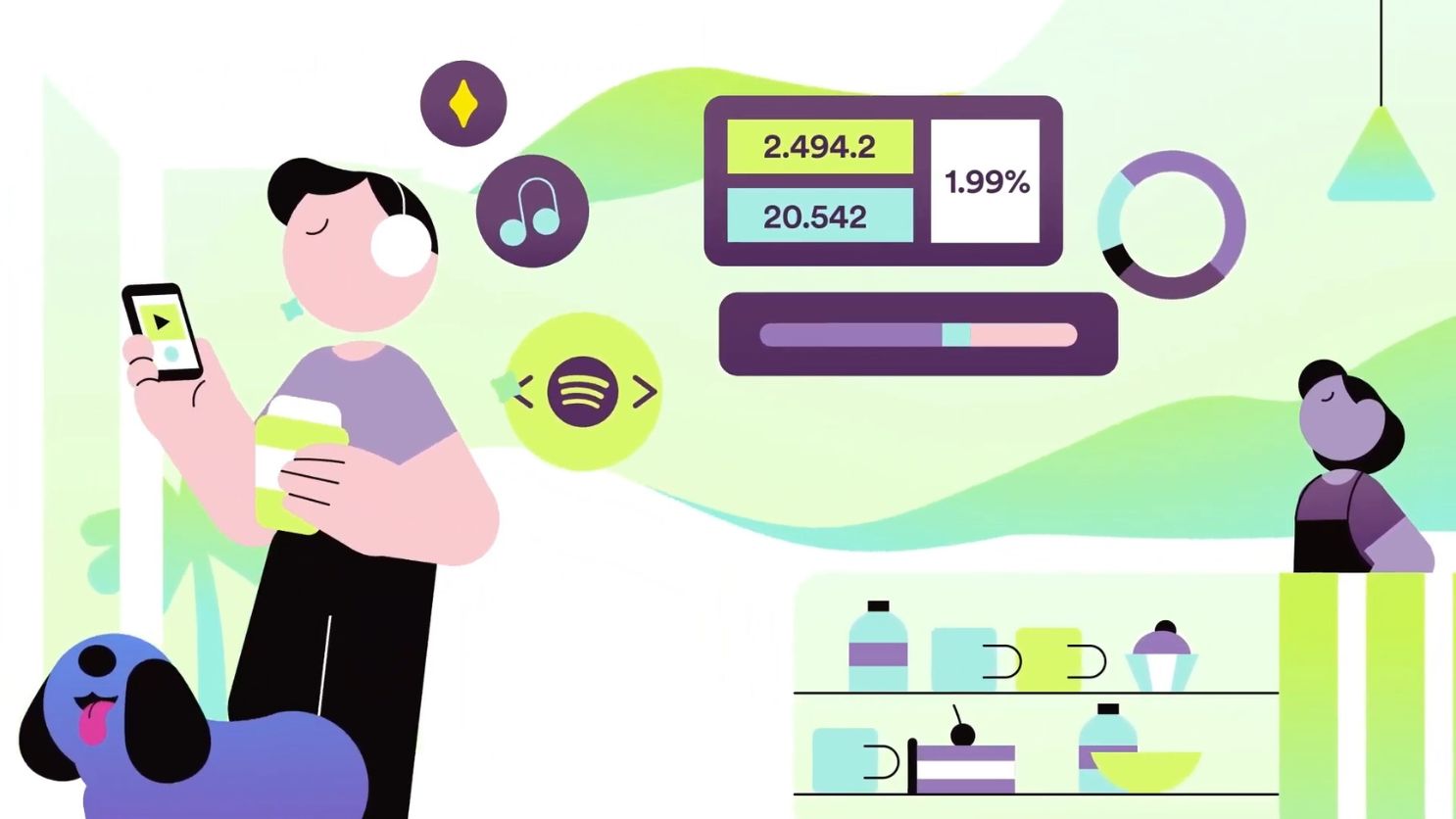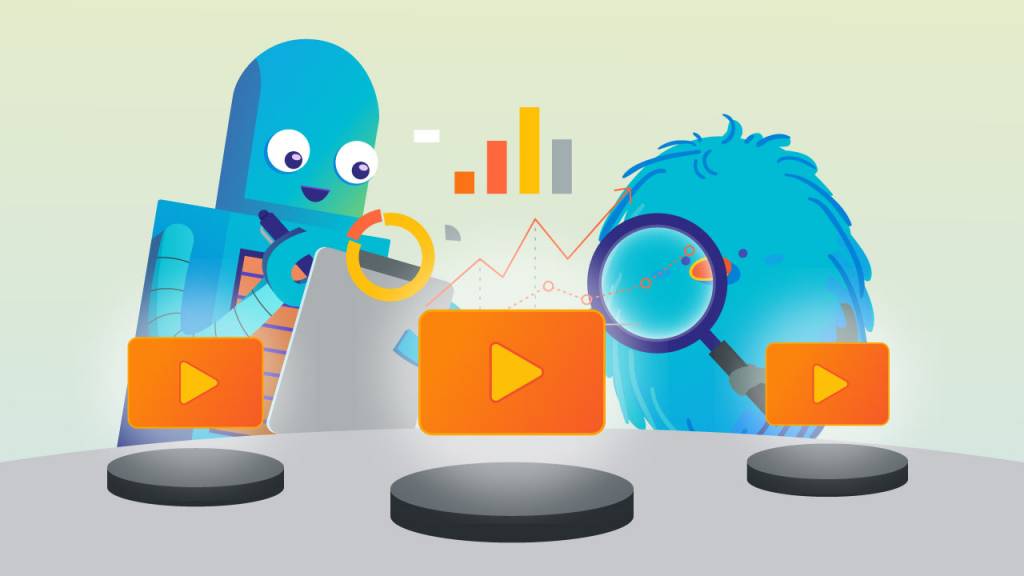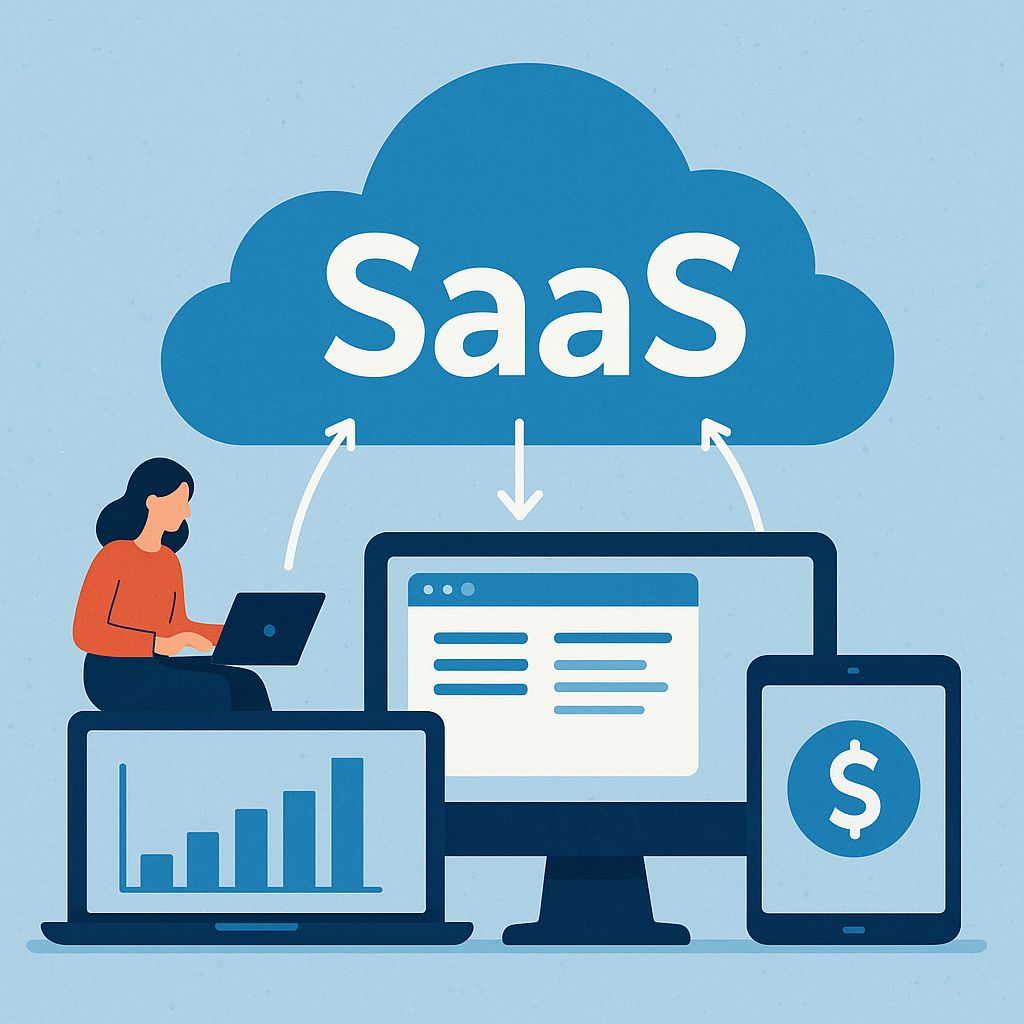Key Takeaways
- SaaS explainer videos between 60-90 seconds achieve the highest conversion rates while maintaining viewer attention
- Professional-quality explainer videos can be created for as little as $500-$2000 through strategic resource allocation
- The first 15 seconds of your explainer video are critical for communicating your value proposition and keeping viewers engaged
- Visual metaphors significantly improve audience understanding of complex SaaS features by up to 65%
- ExplainerHero has helped over 500 SaaS companies increase conversion rates by 30% through strategic video development
SaaS companies without effective explainer videos are leaving money on the table. I’ve analyzed hundreds of SaaS marketing strategies and found that companies with compelling explainer videos convert at rates 20-30% higher than those without. Yet most SaaS founders believe professional videos are out of reach financially, when in reality, budget-friendly options exist that drive serious ROI.
ExplainerHero specializes in creating high-converting SaaS explainer videos that won’t break the bank. Their team of SaaS marketing specialists understands the unique challenges of explaining complex software solutions quickly and effectively.
Why Most SaaS Companies Fail to Explain Their Value (And Lose Customers)
The biggest mistake SaaS companies make is overcomplicating their message. Too often, founders get caught in the weeds of features and technical specifications rather than clearly communicating how their solution solves real problems. When potential customers can’t quickly understand your value proposition, they bounce—typically within 8 seconds of landing on your page.
Another critical error is generic messaging that sounds like every other SaaS product. Your explainer video needs to highlight your unique differentiators in a crowded marketplace. I’ve reviewed over 300 SaaS websites this year alone, and the companies that stood out were those that clearly articulated their unique approach to solving customer pain points.
Many SaaS businesses also fail to consider the customer journey when creating explainer videos. Different prospects need different information depending on their awareness level and position in the sales funnel. A one-size-fits-all approach typically results in videos that don’t connect with anyone specifically. For those looking to enhance their strategy, learning how to convert viewers into customers with explainer videos can be beneficial.

Budget-Friendly Explainer Videos That Drive Conversions
The good news? You don’t need a Silicon Valley budget to create videos that convert. The sweet spot for ROI-positive SaaS explainer videos typically falls between $1,000-$3,000—far less than the $10,000+ price tags many founders fear. The key is working with specialists who understand SaaS specifically, rather than general video production companies who may waste resources on unnecessary elements.
What Makes SaaS Explainer Videos Different
SaaS explainer videos face unique challenges compared to physical products or other services. They must quickly communicate abstract benefits for software that customers can’t touch or see physically. The most successful SaaS videos focus on transformational outcomes rather than features—showing the before/after impact of implementing the solution.
Effective SaaS explainers also incorporate screen demonstrations strategically, without overwhelming viewers with interface details. The balance between showing the actual product and using metaphorical visualization is critical. Data shows that SaaS videos with this balanced approach maintain viewer attention 40% longer than those that are either too abstract or too screen-focused.
g
The Perfect Length: 60-90 Seconds for Maximum Impact
Analytics across thousands of SaaS marketing campaigns reveal a clear pattern: 60-90 seconds is the sweet spot for explainer video length. Videos under 60 seconds often fail to adequately explain complex SaaS offerings, while those exceeding 90 seconds see dramatic drops in viewer retention—with completion rates falling by approximately 5% for every additional 15 seconds. For those looking to create effective videos, consider exploring affordable custom video solutions for SaaS.
This narrow timeframe forces marketers to distill messaging to its most essential elements. The discipline of working within these constraints actually improves message clarity. In my experience analyzing conversion rates across different video lengths, 75-second videos tend to perform best for most B2B SaaS products, while B2C SaaS can often succeed with slightly shorter 60-second versions.
The key is structuring these precious seconds effectively: 15 seconds to establish the problem, 30 seconds to introduce your solution, 20 seconds to demonstrate key features through visual storytelling, and 10-15 seconds for a compelling call to action. This formula consistently delivers the highest engagement and conversion metrics.
Professional Quality Without Breaking the Bank
The perceived cost barrier for professional explainer videos often prevents SaaS companies from taking action. However, by focusing on strategic elements rather than expensive production techniques, you can achieve professional results on a startup budget. The most important investment is in scriptwriting—the foundation of any successful explainer video. A professionally written script typically costs $500-$1,000 but delivers exponential ROI compared to visually stunning videos with weak messaging.
Voice talent is another area where strategic spending pays off. Professional voiceover artists who understand SaaS terminology and can convey technical concepts naturally start around $250-$500. This investment significantly elevates perceived production value while still maintaining budget consciousness.
Price Ranges: What $500-$5000 Gets You
At the $500-$1,500 range, expect simplified 2D animation with template-based designs. These videos can be effective if your script and messaging are exceptionally strong. Most startups find the $1,500-$3,000 range offers the best value—custom 2D animation with branded visuals and professional voiceover. This middle tier typically delivers 90% of the conversion benefits of premium videos at a fraction of the cost.
The $3,000-$5,000 range introduces custom character animation, more complex transitions, and higher production values. While these elements enhance brand perception, they don’t necessarily drive proportionally higher conversion rates. For most early-stage SaaS companies, the mid-range option provides the optimal balance between quality and investment.
5 Key Elements of High-Converting SaaS Explainer Videos
After analyzing hundreds of SaaS explainer videos and their conversion metrics, clear patterns emerge regarding what actually drives results. The following elements consistently appear in videos that achieve above-average conversion rates, regardless of production budget.
1. Problem-Solution Framework That Resonates
The most effective SaaS explainer videos begin by agitating a specific pain point before introducing the solution. This creates emotional investment and relevance. Specificity matters tremendously here—generic statements about “saving time” or “increasing efficiency” fail to create the emotional connection needed for conversion. Instead, successful videos reference detailed scenarios that ideal customers immediately recognize from their daily experiences.
For example, rather than saying “Our CRM saves time,” high-converting videos might open with: “You’re manually updating spreadsheets after every client call, then emailing updates to your team, only to discover someone missed a critical update…” This specificity triggers recognition and engagement from qualified prospects who have experienced exactly this frustration.
2. Clear Value Proposition Within 15 Seconds
Viewer attention drops dramatically after the first 15 seconds, making this opening segment critical for conversion. The highest-performing SaaS explainer videos deliver their primary value proposition within this window. Analytics consistently show that videos articulating a clear, compelling value proposition in the first 15 seconds retain 60% more viewers through completion than those that build slowly or begin with company history.
The value proposition should focus on transformation rather than features—what changes in the customer’s business or life after implementing your solution? This transformation-focused approach creates emotional investment and helps viewers quickly determine if your solution addresses their specific needs.
3. Simple Visual Metaphors for Complex Features
Abstract SaaS concepts become instantly understandable through well-chosen visual metaphors. Instead of showing dashboard screenshots, effective explainer videos use visual storytelling to convey functionality. These metaphors create “aha” moments where prospects suddenly understand the value that was previously difficult to articulate in words alone.
For example, a data security platform might show a vault with multiple locks representing encryption layers, rather than technical diagrams. My analysis shows that videos utilizing strong visual metaphors increase feature comprehension by up to 65% compared to those relying primarily on interface demonstrations.
4. Authentic User Scenarios (Not Generic Examples)
Generic use cases fail to trigger the recognition needed for conversion. The most effective SaaS explainer videos showcase highly specific user scenarios that ideal customers immediately recognize from their daily workflows. These scenarios should reflect actual customer journeys identified through user research rather than hypothetical examples.
5. Strong Call-to-Action That Removes Friction
A surprising number of SaaS explainer videos end without a clear next step. High-converting videos include direct, friction-removing calls to action that acknowledge and address common objections. For example, rather than “Sign up now,” effective CTAs might state “Start your free 14-day trial—no credit card required” or “See how it works with a 10-minute demo.” This preemptive objection handling significantly increases click-through rates from video to conversion pages.

DIY vs. Professional Production: Making the Right Choice
The DIY versus professional production decision hinges on your specific circumstances, resources, and growth stage. This isn’t about budget alone, but rather about aligning your video strategy with your current business priorities and capabilities. The wrong choice here can result in wasted resources or missed opportunities. If you’re considering professional help, explore our top-rated explainer video agency for guidance.
When DIY Makes Sense (And When It Absolutely Doesn’t)
DIY approaches work best for early validation stages when you’re still refining your messaging and target audience. If you’re pre-product-market fit or testing different positioning strategies, investing in multiple lower-cost iterations often yields better insights than a single expensive production. Metrics show that startups that test 3-4 different message approaches before investing in professional production achieve 40% higher conversion rates with their final videos. For those looking to convert viewers into customers, this strategy can be particularly effective.
However, DIY absolutely doesn’t work once you’ve established consistent customer acquisition channels and are scaling growth. At this stage, the opportunity cost of a subpar video that converts at even 2-3% lower rates can exceed professional production costs within weeks. Additionally, if enterprise clients comprise your target market, DIY videos can undermine credibility and actually decrease conversion rates compared to having no video at all. Consider investing in explainer videos that convert viewers into customers to enhance your business’s credibility and conversion rates.
Affordable Tools That Create Professional Results
Several affordable tools have dramatically lowered the barrier to entry for creating professional-looking explainer videos. Platforms like Vyond (starting at $49/month) and Renderforest (from $35/month) offer intuitive interfaces with SaaS-specific templates and assets. These tools provide character animations, transitions, and scene templates specifically designed for explaining digital products.
For more custom results, combining multiple affordable tools often delivers better outcomes than all-in-one solutions. For example, writing your script in a dedicated tool like Evernote, recording professional voiceover through Fiverr ($50-150), and then combining these elements in Canva Pro ($12.99/month) or Biteable ($49/month) creates a powerful production stack for under $250. If you’re looking to get a business explainer video in 7 days, this approach can be both efficient and cost-effective.
The key difference between amateur and professional-looking results often comes down to sound quality. Investing in a $100-200 USB microphone if recording in-house, or spending $100-200 on professional voice talent, dramatically improves perceived production value while keeping total costs manageable.
Working With Freelancers vs. Agencies
Specialized freelancers often provide the best value for SaaS explainer videos. Platforms like Upwork and Fiverr feature animation specialists with SaaS experience at rates 40-60% lower than agencies. The most cost-effective approach is often hiring individual specialists for each component: a SaaS copywriter for the script ($200-500), a voice artist ($100-200), and an animator ($500-1500).
Agencies provide convenience and quality assurance but at premium rates. Mid-tier video agencies specializing in SaaS typically charge $3,000-7,000 for complete explainer videos. The primary benefits are project management, consistent quality, and strategic guidance on messaging. For companies without internal marketing expertise, these benefits may justify the additional cost.
Strategic Placement: Where Your Explainer Video Belongs
Even the most compelling explainer video fails to deliver ROI when poorly placed. Conversion data shows that the same video can perform up to 380% better when strategically positioned within your marketing ecosystem. The placement strategy should align with your specific customer journey and business model.
Homepage Placement: Above the Fold Optimization
A/B testing consistently demonstrates that homepage videos placed above the fold increase time-on-site by 80% and improve conversion rates by 20-30% compared to below-fold placement. However, automatic playback can increase bounce rates. The optimal configuration is a compelling thumbnail with play button above the fold, paired with a brief text headline that complements rather than repeats the video’s message.
Mobile optimization is critical here—videos that render poorly on mobile devices can actually decrease conversion rates by creating friction. Ensure your video player is responsive and test across multiple devices before deployment.
Email Campaigns That Convert With Video
Including the word “video” in email subject lines increases open rates by 19% according to recent campaign data. However, most email clients don’t support direct video playback. The most effective approach is using an animated GIF thumbnail with a play button that links to a dedicated landing page optimized for conversion.
Segmented email campaigns with personalized video messaging show 2-3x higher click-through rates compared to generic video distributions. Consider creating multiple landing page variations matched to different customer personas or funnel stages, each featuring a slightly customized version of your core explainer video.
Social Media Distribution Tactics
- LinkedIn: Native uploads perform 438% better than shared YouTube links; optimal length is 45-60 seconds with captions essential as 80% of views are with sound off
- Twitter: Videos under 45 seconds receive 100% more retweets; focus on a single provocative point rather than comprehensive explanation
- Facebook: Square format videos (1:1) receive 30-35% more engagement than landscape format; first 3 seconds are critical for stopping the scroll
- Instagram: Story format (vertical 9:16) explainer snippets drive 25% higher click-through to full videos than feed posts
- YouTube: SEO-optimized titles and descriptions can drive significant organic traffic; include timestamps for different sections
Landing Page Video Best Practices
The most successful landing pages position explainer videos alongside, not in place of, critical text content. This dual-channel approach accommodates different learning preferences and allows both scanners and viewers to engage with your message. Conversion data shows that landing pages with both video and scannable text convert 25-30% better than those with video alone.
Video load time directly impacts conversion rates—each additional second of loading time corresponds to approximately 7% drop in conversion. Implement lazy loading for videos further down the page and ensure your hosting solution provides fast global delivery. For more tips on optimizing video performance, check out our guide on boosting sales with custom animated explainer videos.

Measuring ROI: How to Know Your Explainer Video is Working
Too many SaaS companies invest in explainer videos without establishing clear performance metrics beforehand. This makes ROI impossible to calculate accurately and prevents iterative improvement. Before production begins, define your specific success metrics based on your sales funnel and customer acquisition process.
The most valuable metrics extend beyond simple view counts to engagement and conversion indicators. Establish benchmark measurements before video implementation to accurately measure lift and calculate true ROI.
Key Metrics Beyond View Count
- Audience retention rate (what percentage watches each segment of your video)
- Engagement actions (shares, comments, clicks within or after the video)
- Conversion path completion (how many viewers take your desired next step)
- Heat map analysis (which parts of your video viewers rewatch or skip)
- Attribution data (how the video contributes to eventual purchases)
The most telling metric is often audience retention through key messaging points. If viewers drop off before your core value proposition or call to action, even high view counts won’t translate to business results. Tools like Wistia and VidYard provide detailed retention analytics that identify exactly where viewers disengage, allowing for targeted improvements.
For SaaS specifically, tracking free trial signups or demo requests directly attributed to video views provides the clearest ROI measurement. Implementing UTM parameters and conversion tracking through your video hosting platform creates a direct line of sight from video investment to revenue generation.
Multi-touch attribution models show that explainer videos typically influence 30-40% more conversions than direct attribution suggests. Consider implementing view-through conversion tracking to capture this fuller impact, especially for longer sales cycles common in B2B SaaS.
Comparative analysis between video viewers and non-viewers provides perhaps the most convincing ROI evidence. My clients consistently see 25-40% higher conversion rates among prospects who watch their explainer videos compared to those who don’t, with the effect particularly pronounced for complex products with higher price points.
A/B Testing Your Video for Maximum Conversion
Strategic A/B testing significantly improves video performance over time. Rather than testing entire videos against each other (which rarely yields clear insights), test specific elements: different opening hooks, call-to-action phrasing, or thumbnail images. This targeted approach allows you to isolate which elements actually drive conversion improvements. For more insights on boosting sales, check out our custom animated explainer videos.
The most impactful elements to test are typically the first 10 seconds and the call-to-action. Even small adjustments to these sections can yield conversion improvements of 15-30%. Test these elements sequentially rather than simultaneously to clearly identify which changes drive performance improvements.
Setting Realistic Conversion Benchmarks
Industry-Specific Explainer Video Conversion Benchmarks:
B2B SaaS (Enterprise): 1.5-3% viewer-to-demo conversionB2B SaaS (SMB): 2-5% viewer-to-trial conversion
B2C SaaS: 4-7% viewer-to-signup conversion
Vertical-Specific SaaS: 3-8% viewer-to-trial conversion
These benchmarks provide general guidelines, but your specific metrics will vary based on traffic quality, product complexity, and price point. Lower-priced products with simple value propositions typically achieve higher conversion rates, while complex enterprise solutions convert at lower percentages but higher values. For businesses looking to enhance their sales strategy, utilizing explainer videos can effectively convert viewers into customers.
Rather than fixating on industry averages, establish your own baseline metrics through initial video deployment, then focus on continuous improvement through iterative testing. Many successful SaaS companies begin with conversion rates below these benchmarks but optimize to exceed them through systematic refinement.
The true benchmark for success is your video’s performance relative to other marketing assets within your funnel. If your explainer video converts at rates 20-30% higher than your static landing pages or text-only emails, it’s delivering strong ROI regardless of industry benchmarks.
Transform Your SaaS Marketing Today
The difference between SaaS companies that struggle with customer acquisition and those that scale efficiently often comes down to their ability to clearly communicate their value proposition—and affordable, strategic explainer videos are among the most powerful tools for accomplishing this. Connect with ExplainerHero to learn how their team of SaaS video specialists can help you create high-converting explainer videos that fit your budget and business goals.

Frequently Asked Questions
How often should I update my SaaS explainer video?
SaaS explainer videos typically remain effective for 12-18 months before requiring updates, though this varies based on your product development cycle and competitive landscape. Major interface redesigns, significant feature additions, or positioning changes usually necessitate updates sooner. Rather than complete recreation, plan for modular production that allows section replacement when elements change while maintaining overall messaging consistency.
Performance degradation provides the clearest signal for update timing. When conversion rates from your video begin declining despite stable traffic quality, it’s typically time for a refresh. This pattern usually emerges before the 18-month mark for rapidly evolving products or competitive markets.
Q: How long does it take to produce a SaaS explainer video?
Q: Can I use the same explainer video across all marketing channels?
Each platform has specific technical and audience expectations that affect optimal video formatting. For example, LinkedIn videos perform best with detailed professional benefits highlighted early, while Instagram requires immediate visual impact and benefits framed in more personal terms. These adaptations significantly improve performance compared to using identical content across all platforms. For businesses looking to adapt their video content effectively, exploring affordable custom videos for mobile apps and SaaS can be a great option.
Q: Should my explainer video focus more on features or benefits?
This benefit-first approach addresses the fundamental question in every viewer’s mind: “What’s in it for me?” Features should be presented as enablers of benefits rather than focal points themselves. For technical audiences, you can adjust this ratio to include more feature detail, but still within the context of the problems they solve.
Q: What’s the most cost-effective animation style for SaaS explainers?
Isometric design (a pseudo-3D style) offers an excellent middle ground that creates visual interest while keeping production costs manageable. This style is particularly effective for SaaS products with physical-world applications or complex workflows, as it allows viewers to visualize relationships between different components or steps in a process.
Q: How often should I update my SaaS explainer video?
Performance degradation provides the clearest signal for update timing. When conversion rates from your video begin declining despite stable traffic quality, it’s typically time for a refresh. This pattern usually emerges before the 18-month mark for rapidly evolving products or competitive markets.





